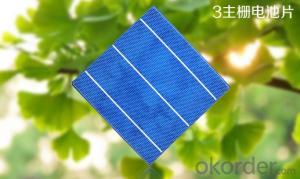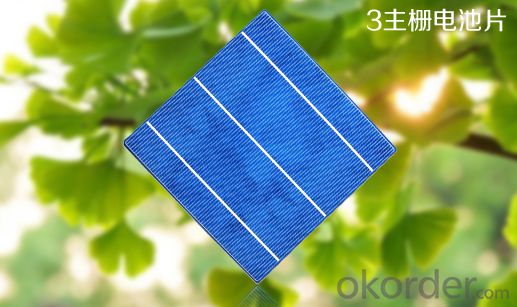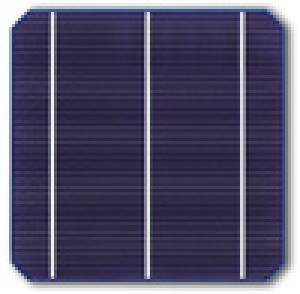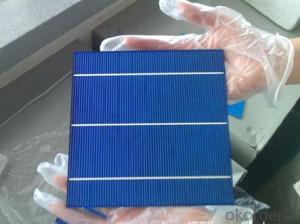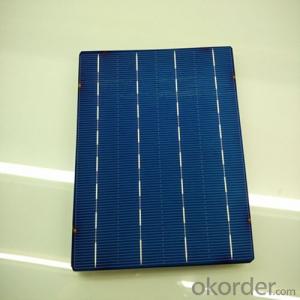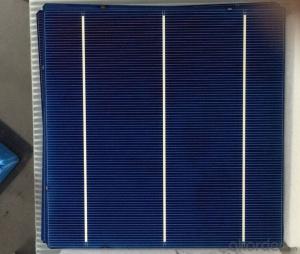PV Poly 3BB Triple Junction Solar Cells for Sale
- Loading Port:
- China Main Port
- Payment Terms:
- TT OR LC
- Min Order Qty:
- -
- Supply Capability:
- -
OKorder Service Pledge
OKorder Financial Service
You Might Also Like
PART1:Introduction:
We supply regular mono 125x125mm and poly 156x156mm solar cells.
Cells made in China mainland and Taiwan are both available.
Cell production capacity yearly reach 1GW.
Our cells pattern include continuous and uncontinuous busbar to meet different cells line.
THE CHARACTERISTIC OF 156P POLY-SILICON SOLAR CELLS
1.Format 156mm×156mm±0.5mm,Thickness 210μm±30μm.
2.High efficiency in photovoltaic conversion 16.3%~17.93%;
3.Low inverse current, high shunt resistance and high dependability.
4.Front(-): covered by dark blue silicon nitride anti-reflecting coating(silicon nitride) with bus bars(silver), 2/3/5 bud bars(silver).
5.Back(+): wide soldering pads(silver), back surface field(aluminum),high quality paste for the BSF and the electrode ensure higher tension and improve soldering easiness.

- Q: Can solar cells be used for powering manufacturing facilities?
- Yes, solar cells can be used for powering manufacturing facilities. Solar energy is a renewable and clean source of power that can be harnessed through solar cells, also known as photovoltaic (PV) panels. By installing a sufficient number of solar panels, manufacturing facilities can generate electricity to meet their energy demands. This not only reduces reliance on traditional fossil fuels but also helps in reducing greenhouse gas emissions, making it an environmentally friendly solution for powering manufacturing operations.
- Q: What is a monocrystalline Silicon Solar Cells?
- A monocrystalline Silicon Solar Cell is a kind of solar cell made of monocrystalline siclicon that has been used for many years. Because it is used in a way that is very unique in their use of a single, very pure crystal of silicon, It is considered to good for longevity.
- Q: How do solar cells perform in high altitude regions?
- Solar cells perform more efficiently in high altitude regions due to several factors. Firstly, high altitudes often have less air pollution, which means there are fewer particles in the air that can block or scatter sunlight. This allows solar cells to receive more direct sunlight, resulting in increased energy production. Additionally, solar cells operate more efficiently at lower temperatures, and high altitudes generally have cooler temperatures compared to lower elevations. Cooler temperatures help to reduce heat-related losses and improve the overall performance of solar cells. Therefore, solar cells in high altitude regions tend to generate more electricity and have higher conversion rates.
- Q: Want to use solar panels and batteries to produce a power supply that can provide a stable voltage, how can you connect? Can you connect directly with the solar panel to the battery while the battery power supply is feasible?
- In the case of solar power to charge the battery at the same time, the battery power supply is completely feasible, in this case, the load will use the power of electricity directly to the use of solar cells, the remaining charge to the battery; the contrary, if the solar battery power is not enough , Will also take electricity from the battery at the same time.
- Q: Can solar cells be used for powering remote data collection devices?
- Yes, solar cells can be effectively used for powering remote data collection devices. Solar cells convert sunlight into electricity, providing a sustainable and reliable source of power in areas where access to conventional electricity may be limited or non-existent. By harnessing solar energy, remote data collection devices can operate autonomously without the need for frequent battery replacements or external power sources, making them ideal for applications such as weather monitoring stations, wildlife tracking devices, or environmental sensors in remote locations.
- Q: Can solar cells be used in street lighting?
- Yes, solar cells can be used in street lighting. Solar-powered street lights use photovoltaic panels to convert sunlight into electricity, which is stored in batteries. This stored energy is then used to power the street lights during the night, making them independent from the electrical grid and more environmentally friendly.
- Q: What is the maximum efficiency of a solar cell?
- The maximum efficiency of a solar cell refers to the highest percentage of sunlight that can be converted into usable electricity by the cell. Currently, the highest efficiency achieved by commercial solar cells is around 26-27%. However, in laboratory settings, experimental solar cells have reached efficiencies of up to 46%.
- Q: Can solar cells be used to power agricultural irrigation systems?
- Yes, solar cells can be used to power agricultural irrigation systems. Solar panels can convert sunlight into electricity, which can be used to power pumps and other equipment necessary for irrigation. This renewable energy source can provide a sustainable and cost-effective solution for powering irrigation systems in remote or off-grid areas.
- Q: Can solar cells be used in shopping malls?
- Yes, solar cells can be used in shopping malls. In fact, many shopping malls around the world have already adopted solar panel systems to generate clean and renewable energy. These solar cells can be installed on rooftops, parking lots, or even as shading structures in outdoor areas, helping to reduce electricity costs and environmental impact.
- Q: What is the impact of dust or dirt on solar cell performance?
- The presence of dust or dirt on solar cells can have a significant impact on their performance. It can reduce the amount of sunlight reaching the cells, thereby decreasing their efficiency in converting sunlight into electricity. The accumulation of dust or dirt can create a barrier between the sunlight and the cells, preventing the photons from effectively interacting with the semiconductor material. This can result in a decrease in power output and overall energy generation. Regular cleaning and maintenance of solar panels are essential to ensure optimal performance and maximize energy production.
Send your message to us
PV Poly 3BB Triple Junction Solar Cells for Sale
- Loading Port:
- China Main Port
- Payment Terms:
- TT OR LC
- Min Order Qty:
- -
- Supply Capability:
- -
OKorder Service Pledge
OKorder Financial Service
Similar products
Hot products
Hot Searches
Related keywords
